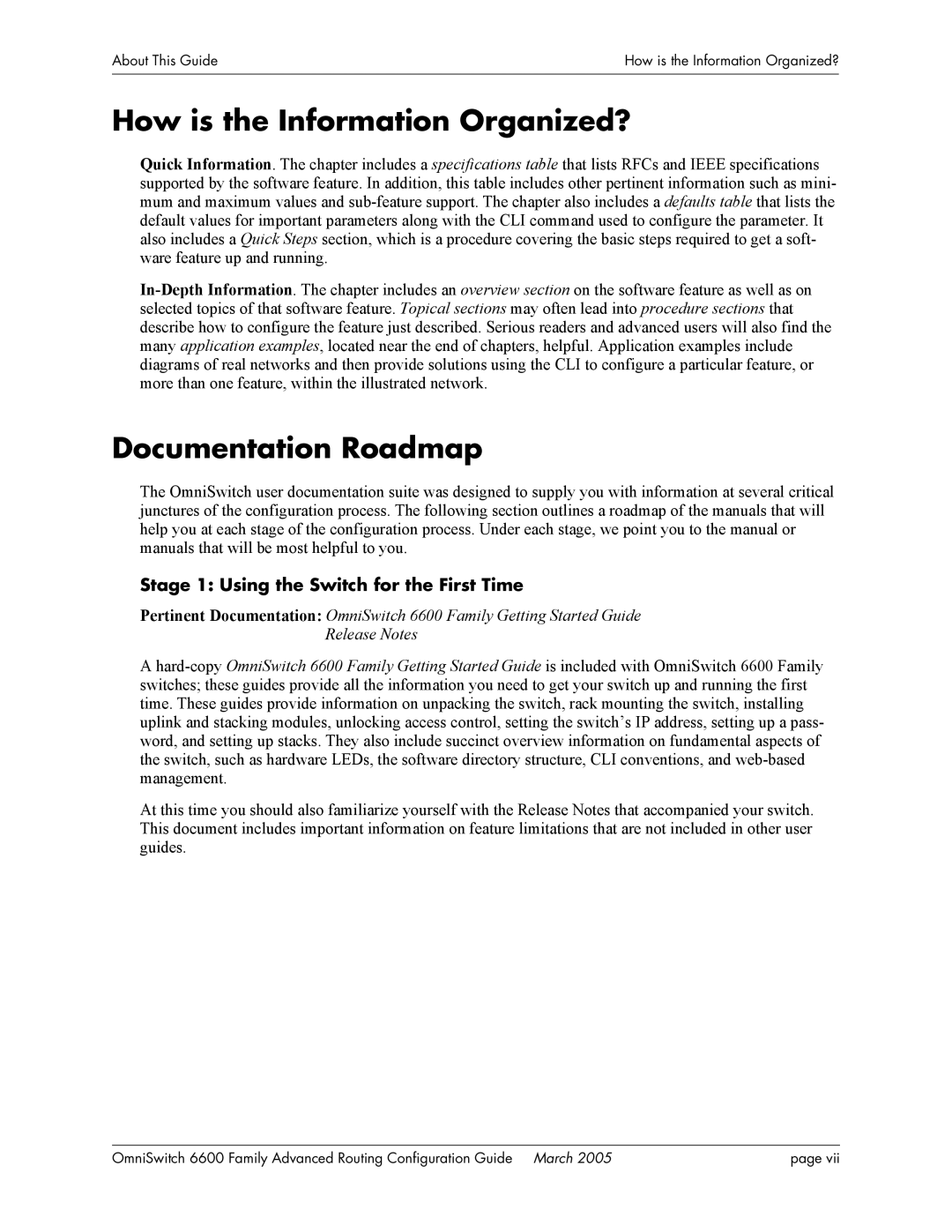About This Guide | How is the Information Organized? |
| |
| |
How is the Information Organized?
Quick Information. The chapter includes a specifications table that lists RFCs and IEEE specifications supported by the software feature. In addition, this table includes other pertinent information such as mini- mum and maximum values and sub-feature support. The chapter also includes a defaults table that lists the default values for important parameters along with the CLI command used to configure the parameter. It also includes a Quick Steps section, which is a procedure covering the basic steps required to get a soft- ware feature up and running.
In-Depth Information. The chapter includes an overview section on the software feature as well as on selected topics of that software feature. Topical sections may often lead into procedure sections that describe how to configure the feature just described. Serious readers and advanced users will also find the many application examples, located near the end of chapters, helpful. Application examples include diagrams of real networks and then provide solutions using the CLI to configure a particular feature, or more than one feature, within the illustrated network.
Documentation Roadmap
The OmniSwitch user documentation suite was designed to supply you with information at several critical junctures of the configuration process. The following section outlines a roadmap of the manuals that will help you at each stage of the configuration process. Under each stage, we point you to the manual or manuals that will be most helpful to you.
Stage 1: Using the Switch for the First Time
Pertinent Documentation: OmniSwitch 6600 Family Getting Started Guide
Release Notes
A hard-copy OmniSwitch 6600 Family Getting Started Guide is included with OmniSwitch 6600 Family switches; these guides provide all the information you need to get your switch up and running the first time. These guides provide information on unpacking the switch, rack mounting the switch, installing uplink and stacking modules, unlocking access control, setting the switch’s IP address, setting up a pass- word, and setting up stacks. They also include succinct overview information on fundamental aspects of the switch, such as hardware LEDs, the software directory structure, CLI conventions, and web-based management.
At this time you should also familiarize yourself with the Release Notes that accompanied your switch. This document includes important information on feature limitations that are not included in other user guides.
